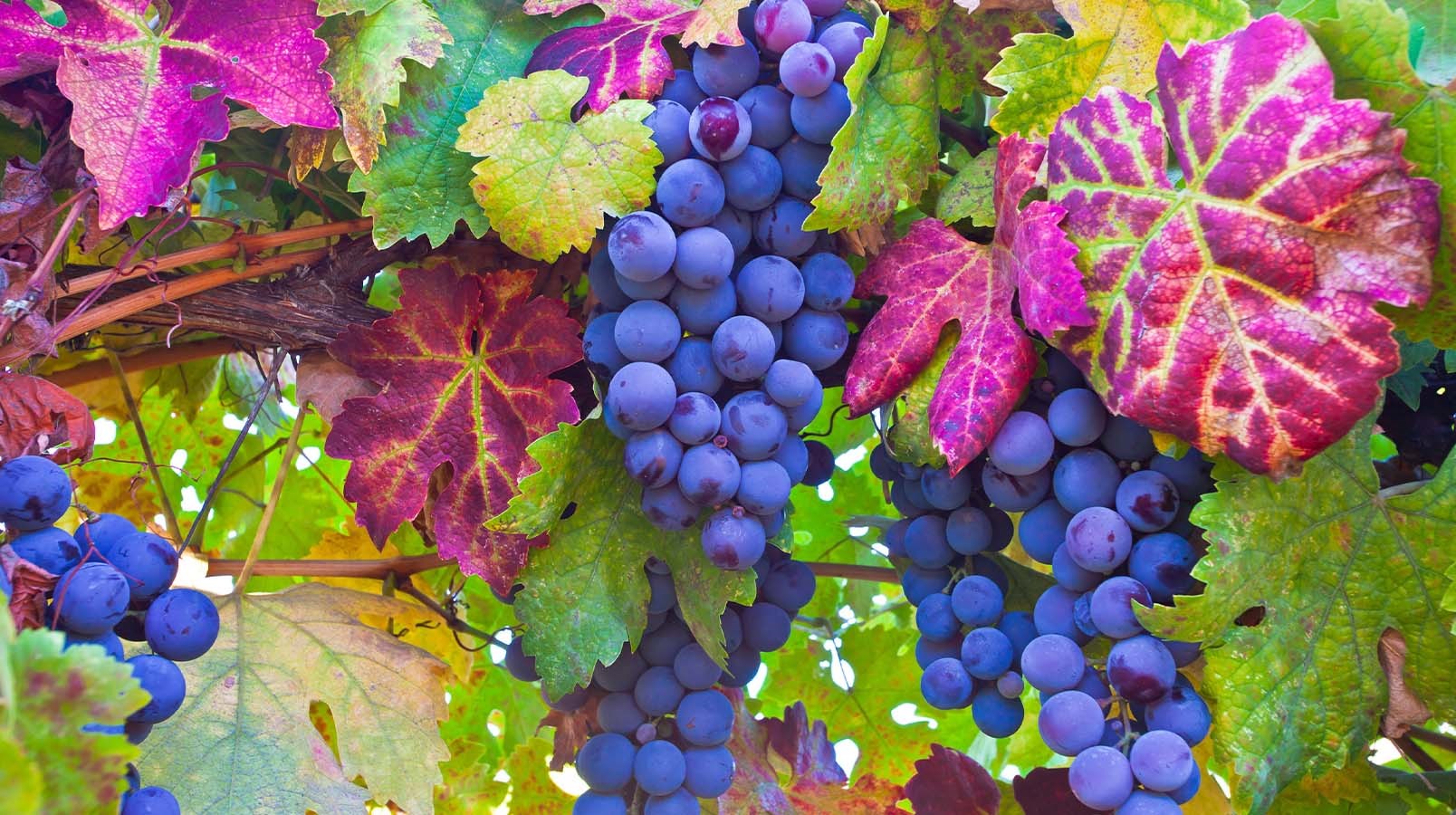Wine comes in a vast range of colours. White, red and rosé wines are all made from fermented grape juice, but how do they come to be in these distinct colours?
The colour of your wine comes from the skin of the grape, but the juice itself is actually colourless. If you want to see for yourself, try squeezing or peeling a black grape and take a look at the juice inside.
To make red wines red and rosé wines rosé, the wine must be made from black-skinned grapes. These skins must be left in contact with the juice during winemaking. If the juice is extracted and the skins are removed straight away, it’s possible to make white wine from black grapes – Champagne is a famous example of a wine made like this. In practice, though, almost all white wines are made from white-skinned grapes.
Curious to discover more about the basics of grape growing? Our internationally recognised Level 1 Award in Wines will give you the foundation of knowledge to begin your journey in wine.
Click here to find out more.
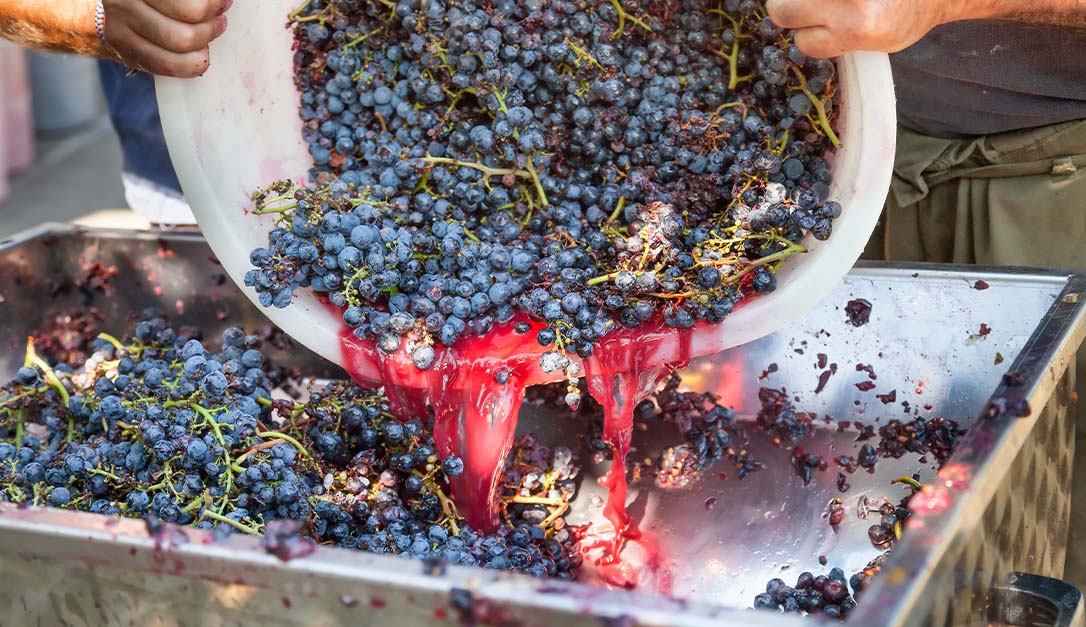 Grapes arriving from harvest
Grapes arriving from harvest
When grapes arrive at the winery after the harvest, any stalks are usually removed, and the grapes are crushed open to break the skins and release the sugary colourless juice.
When making white wine, the grape skins will typically be removed straight away. The crushed grapes undergo a process called pressing, in which a machine separates the skins and the seeds from the grape juice. The clear, sugary liquid is then fermented into white wine. This is the common process for making white wine.
For red winemaking, however, the grapes aren’t pressed until after the fermentation. The grapes are crushed, and a mixture of skins and juice is created, which is fermented together. During fermentation, colour is extracted from the skins along with tannin, the compound responsible for the grippy, mouth-drying sensation you get when you taste red wine.
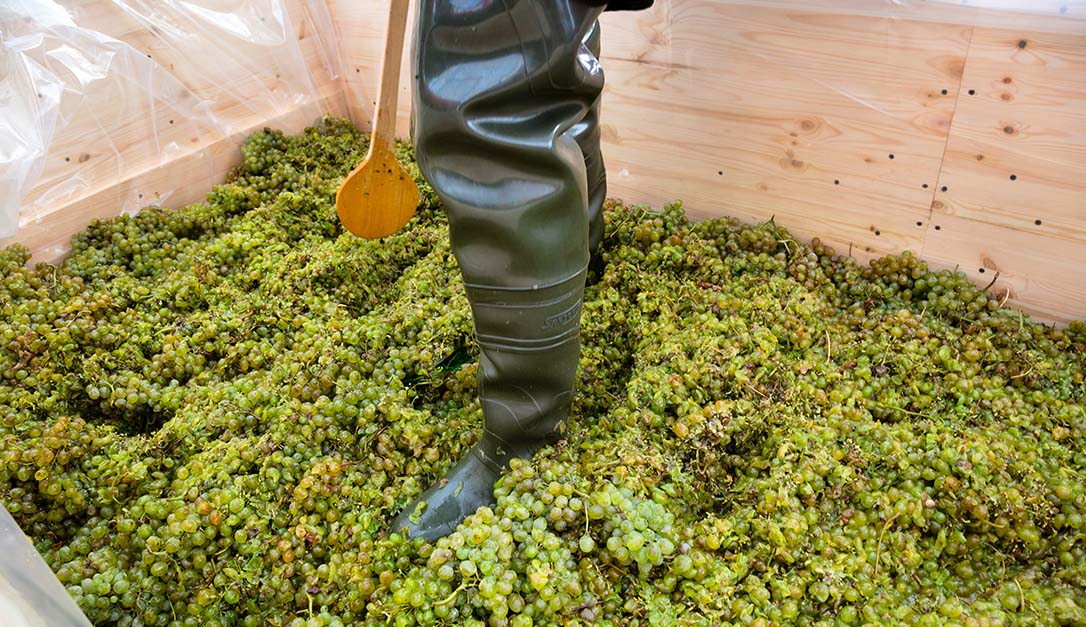
Crushing white grapes by foot
The winemaker can influence how much colour and tannin is extracted from the skins whilst fermentation is taking place. It’s a little like brewing a cup of tea - the longer you leave the tea in contact with hot water, the deeper the colour will become. The flavour will also be stronger and more bitter because tea also contains tannin. Similarly, temperature and time both play a role in determining how deeply coloured and tannic the wine becomes during fermentation.
Pro tip: To assess the appearance of your wine, hold it at a 45° angle against a white surface (e.g. a piece of paper). This should help you to judge its colour and intensity.
The grape variety used also influences the final colour of the wine. Thinner-skinned varieties like Pinot Noir simply have less colour and tannin to give to the wine, while the thick-skinned Cabernet Sauvignon grape can create deep-coloured wines with plenty of mouth-gripping tannins. Only after the fermentation is complete are the skins pressed and separated from the wine.
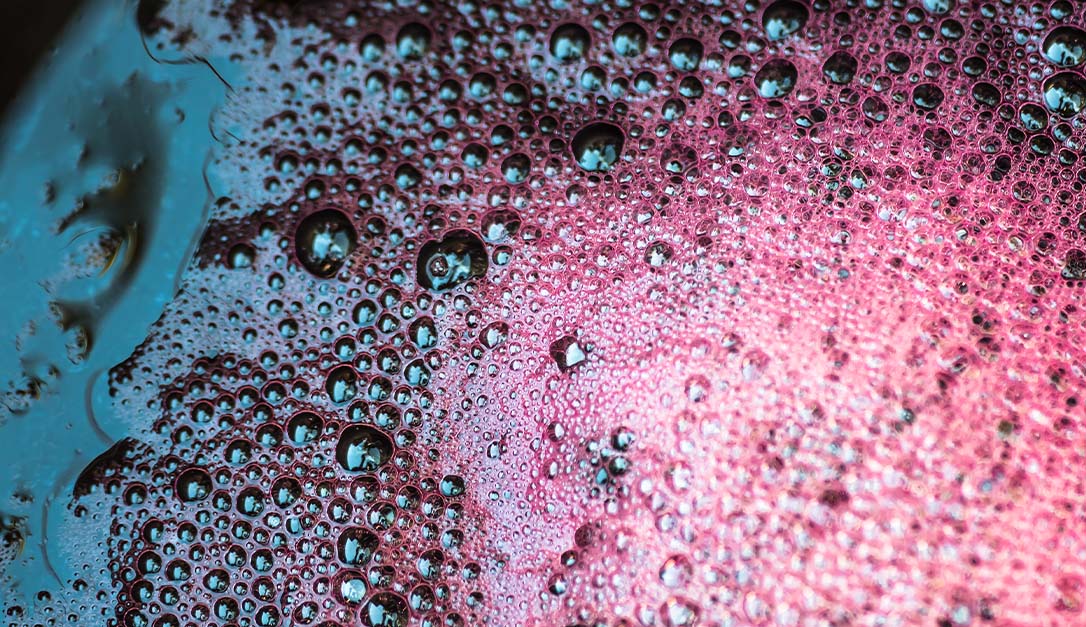 Red wine fermenting
Red wine fermenting
Rosé wines also get their colour from black grape skins, but these wines are much paler in colour and typically don’t have tannins. Most are made by soaking or macerating the crushed grapes for a short period, enough time for the skins to stain the juice a pink colour.
The winemaker will be careful not to soak the grapes for too long – otherwise, it might turn into a red wine. Before tannins have been extracted, when the juice is the right shade of pink, it will be separated from the skins and fermented much like a white wine.
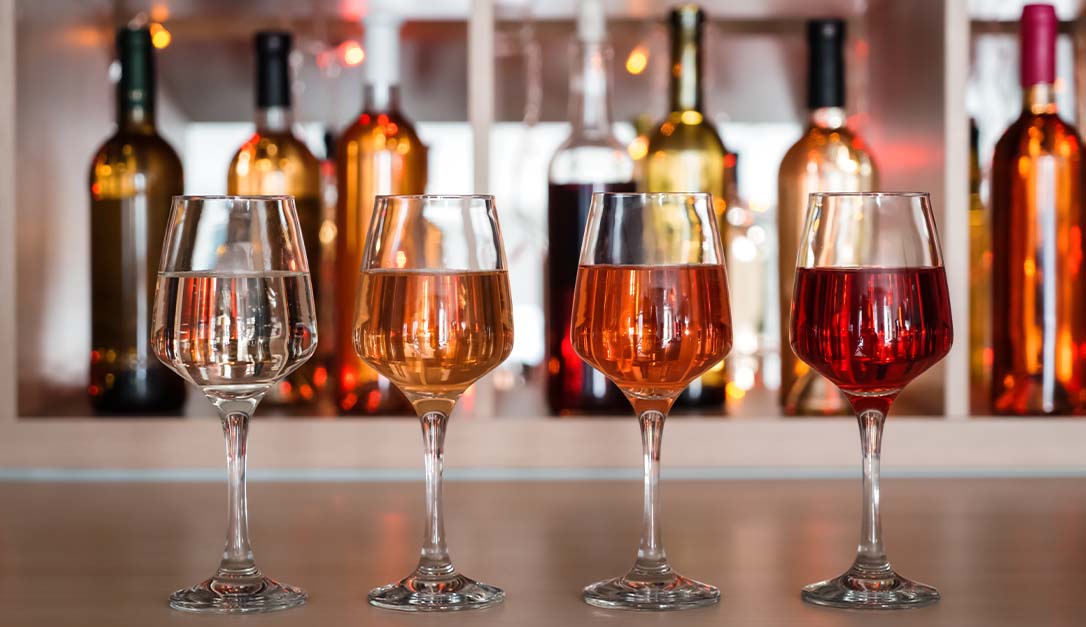 Comparing colours of wines
Comparing colours of wines
While the colour of a wine may change as it gets older, the appearance of any newly made wine is determined almost exclusively by contact with the grape skins. If you attend a tasting or organise one with friends, try a few different wines side by side. You’ll see that the differences in their depth and colour will be clearly visible.
Interested in learning more about winemaking? Click here to find out more about our Level 2 Award in Wines.
Related content:


